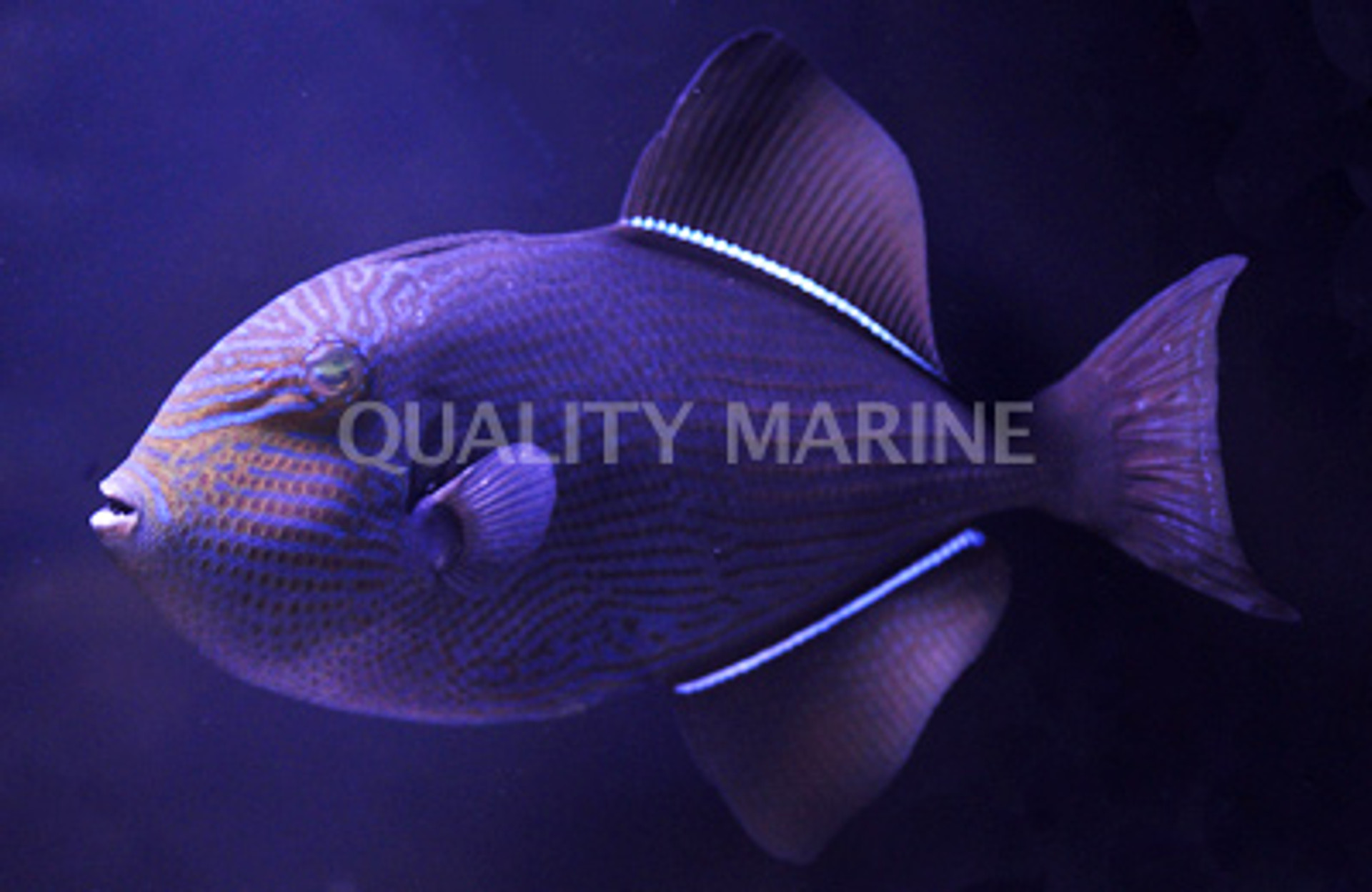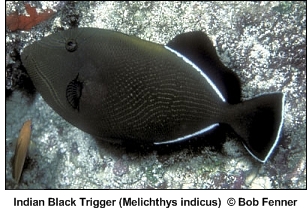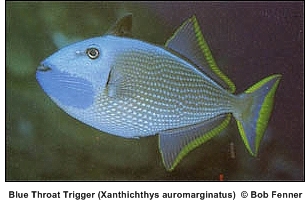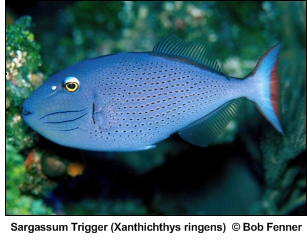Reef Safe Triggerfishes

Who would have thought that we would be keeping triggerfish in our reef tanks as recently as a few years ago? While some adventurous hobbyists have kept certain species of triggerfish in mostly soft coral tanks in the past, it is becoming more common to see triggerfish in even stony coral tanks nowadays. Triggerfish are amazingly hardy, have very conspicuous behavior and are easy to care for. They belong to the family Balistidae, which consists of eleven genera and almost forty species. The majority are not good aquarium candidates, displaying aggressive behavior and growing quite large, but for a select group of species, they are wonderful aquarium pets. Most crustaceans are at risk, even with the most well behaved species. Triggerfish get their name from having the ability to use their first dorsal spine to lock into a rock crevice when alarmed or resting. The only way to get the fish to release its stronghold is to depress the second dorsal spine or "trigger". This should not be attempted in the home aquarium as it can cause undue stress on the animal and result in a possible bite to the aquarist. This trigger mechanism can even be observed in fish that are deceased.

The best choices of triggerfish species for the reef aquarium are in the Melichthys, Odonus and Xanthichthys genera. Fish within these genera have a much smaller mouth that is positioned higher on their head. They are either planktivores, feeding on small fish larvae and crustaceans in the water column or herbivores, consuming mostly floating algae, such as sargassum. Every fish has its own personality, so only general characteristics can be applied to how each fish will behave when added to the aquarium. The most popular species are the Xanthichthys and include the Blue Throat Trigger (X. auromarginatus), Sargassum Trigger (X. ringens), and Crosshatch Trigger (X. mento). The latter is often considered to be the "Holy Grail" of triggerfish. The striking scale pattern (crosshatch) and limited availability also make this species the most expensive. X. mento is collected in limited areas of deep-water reefs in Hawaii and Christmas Island. Xanthichthys spp. typically display good behavior and eat a variety of prepared diets, such as frozen mysis, brine shrimp, chopped mussels and shrimp. They also readily eat flake and pellet food. I have even seen them eat freeze-dried algae which is typically fed to tangs and angelfishes. It is important to note that all triggerfish prefer to eat several times a day. This is usually not a problem in most reef aquariums with other planktivores, such as anthias and flasher wrasses that require similar feeding regimes. The other nice thing about the Xanthichthys spp. is that they can easily be paired with a large male and a smaller female. This pairing, along with regular feeding further helps keep them occupied and well behaved in the aquarium environment. Other species that have been increasing popular for reef aquariums are the Red-toothed Trigger (Odonus niger), Indian Black Trigger (Melichthys indicus), and Pink Tail Trigger, (M. vidua).

Common aquarium diseases, such as external parasites and bacterial infections, rarely affect triggerfish. They have extremely thick, tough skin, which clearly gives them an advantage in fighting off disease. They are also very tolerant of less than perfect water chemistry, which makes them one of the better aquatic investments. There are numerous factors that can effect how a trigger behaves in a reef environment. As with most larger, more dominant species, adding the trigger last is usually the best advice. Tanks with limited live rock and territorial hiding places will typically see more aggressive behavior than a well-stocked live rock layout. When adding fish after the trigger(s) is it best to make acclimations after the lights have gone off. This is not only less traumatic on the new addition, it encourages the trigger to stay in its resting space and not attack the newcomer. Once acclimated, most triggerfish will not even give much attention to its other tank mates. The larger the tank, the better chances you have for maintaining a community environment. Some tanks with only soft corals can keep other species, such as the popular Clown Triggerfish (Balistoides conspicillum). I have seen this species in tanks with large leather corals (Sarcophyton spp.), anemones and others such as Xenia. Once again, as long as the triggerfish is fed regularly and no shrimp or other crustaceans are present, there are many options to choose for the adventuresome aquarist.

With a little research and the right aquarium, aquarists can now enjoy the beauty and personality of numerous triggerfish species in a variety of reef tanks. As more hobbyists experiment with different species, we are sure to continue to learn more about keeping a variety of species that were once thought to be taboo in a reef tank.